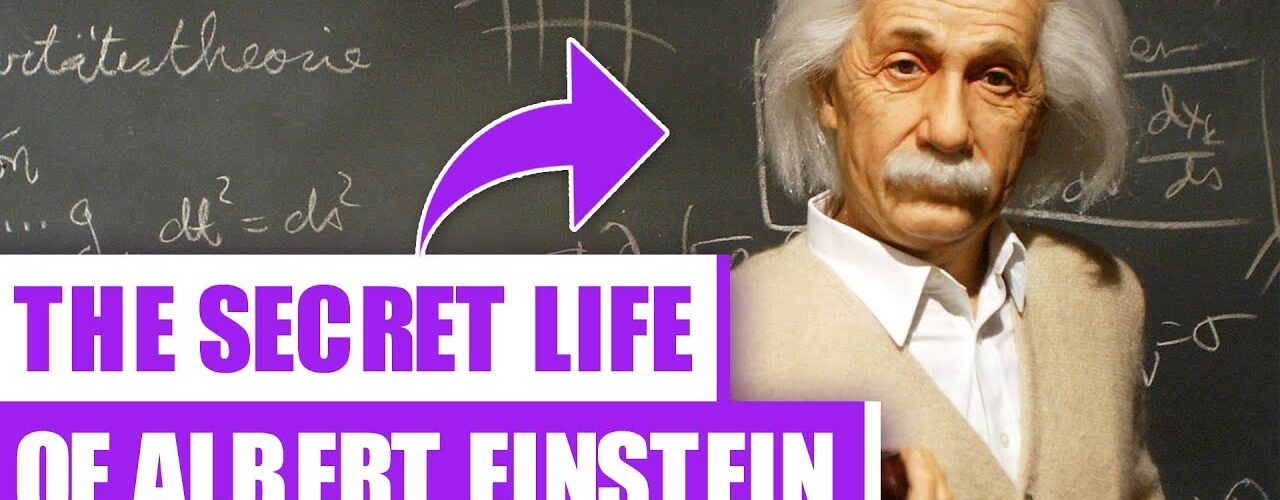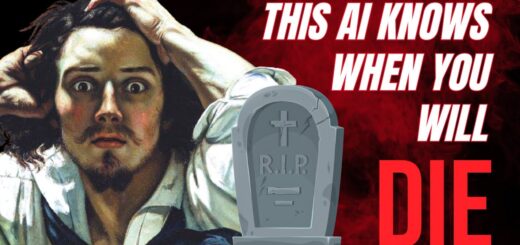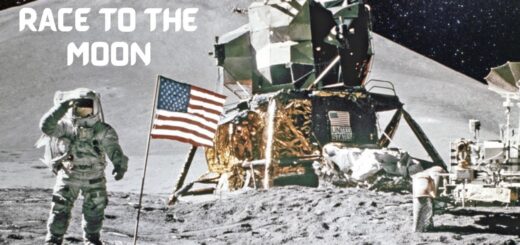Top Secret Facts About Albert Einstein

Albert Einstein was so smart that scientists studied his brain after he died to figure out why. He was such an icon that Time magazine named him “person of the century” in 1999. But despite his fame, the world’s best-known scientist had his secrets. The FBI kept a clandestine file on him and he had an illegitimate child, to name just two.
This is the story of Albert Einstein in full. Einstein was born in Ulm in southwestern Germany on March 14, 1879. The family moved to Munich just a few weeks later where he grew up with his younger sister. When he was five years old, he fell ill one day, his father gave him a compass to cheer him up. Einstein was amazed that the needle always pointed to the magnetic north no matter which way he turned the compass. In his Autobiographical Notes, he recalled: “I can still remember—or at least believe I can remember—that this experience made a deep and lasting impression upon me. Something deeply hidden had to be behind things.” So began a lifelong fascination with physics.
He later said that if he hadn’t become a physicist he’d probably be a musician. He loved music, especially Mozart sonatas, and played the violin. Unlike many geniuses, Einstein wasn’t a child prodigy. He didn’t speak full sentences until he was five, according to his biographers. His parents were understandably worried. But when he got into school, Einstein came into his own. His family was Jewish but he attended a Catholic elementary school where he excelled as a student. There was a rumor going around that he flunked math but to the contrary, Einstein said that he had already mastered differential and integral calculus before the age of 15.
Citizenship
For a while, his father, Hermann, ran a small electrochemical plant but he struggled to keep it going. Eventually, he moved his family to Italy in the hopes of finding new opportunities. Young Albert stayed behind to finish high school. He hated school where success depended on memorization and obeying authority. He was a rebel and apparently threw temper tantrums. One exasperated teacher even said he would never amount to anything. Einstein dropped out at age 15. He also renounced his German citizenship which got him out of mandatory military service. For a few years, he belonged to no country, and loathed nationalism, preferring to be a citizen of the world. When he did eventually become a citizen again, it was Swiss.
When he moved to Switzerland, he tried to get admitted to the prestigious Swiss Federal Institute of Technology. He did well in the math and physics section of the entrance exam but is said to have done horribly in language, zoology, and botany. It didn’t help that the exam was in French. So he didn’t get in and instead, continued his high school studies. He was a good student, scoring the highest possible grade of 6 in many subjects, including in math and physics. With this under his belt, he was automatically admitted to the Swiss Federal Institute of Technology, where he had originally flunked the entrance exam.
Educational Scheme
He enrolled in a four-year teaching program in math and physics. That’s where he met his future wife Mileva Maric – the only female student in his physics class. Einstein’s private letters discovered in the eighties caused a sensation because they revealed the couple had a child out of wedlock, a daughter named Lieserl. According to their correspondence, Lieserl was born in 1902, a year before her parents married. She was cared for by her mother while staying with her family in her native Serbia while Einstein worked in Switzerland. Maric would later join Einstein without the child. It’s unclear what happened to their daughter. Historians believe she either died in infancy, probably from scarlet fever or was given up for adoption. Maric and Einstein would have two sons after they married.
Einstein as a Father
The eldest, Hans Albert, said Einstein wasn’t a good father, remarking: “Probably the only project he ever gave up on was me.” In 1901, Einstein received his diploma to teach physics and math. But, he struggled to find an academic position after two years of searching. He is said to have even applied to teach high school. Eventually, he worked at the Swiss patent office in Bern for seven years. This job would be a blessing in disguise. It wasn’t mentally challenging, and he found that when he was done evaluating patents for the day, he could use the rest of his time to work on scientific research – his real passion. 1905 was Einstein’s year of miracles. He wrote four papers in a German scientific journal that changed the way we see the universe. I’ll try to explain them as simply as possible. Einstein is believed to have said: “If you can’t explain it simply, you don’t understand it well enough.”
Theories
The first was his theory of light. Physicists at the time believed light was a wave. But it didn’t make sense that light could create an electric current. Einstein proposed that light was actually made up of a stream of particles called photons, and these photons could knock an electron off an atom to create a current. This is the Photoelectric Effect.
His second paper made a case for the existence of atoms. He observed what seemed like the random movement of particles in water and reasoned that it’s not so random if the water is actually made up of invisible atoms that cause the particles to jiggle. This was called Brownian Motion after the botanist Robert Brown who had observed the phenomenon earlier.
His third and most famous discovery is his Special Theory of Relativity. In which it’s impossible to say if two events occurred at the same time if those events are separated in space. A, B, and C all happen at the same time, however, they appear to occur in a different order depending on the location of the observer. Or let’s say someone in London starts running at the same time as someone in New York. They would appear to start running at different times if the observer is on a plane flying between London and New York. Relativity is the basis of the world’s most famous formula. E = mc squared.
His fourth paper gave us this equation which shows how energy equals mass times the speed of light squared. In case you’re feeling somewhat intellectually challenged at this point, Einstein once said: “Do not worry about your difficulties in Mathematics. I can assure you mine are still greater.” So under the right conditions, energy can become mass and mass can become energy.
As Einstein gained greater prestige, his wife gained more household work. Maric was also passionate about math and science but gave up her own ambitions to care for their children. There is even some evidence she helped her husband develop some of the concepts in his famous papers. In Einstein’s letters to her, he referenced “bringing our work on relative motion to a successful conclusion!” The papers would transform him from an unknown patent office to a renowned genius. He would go on to teach physics at universities in Prague, Zurich, and Berlin where he reacquired German citizenship and spent his time during World War I. War, by the way, disgusted him. Although his professional life was going well, his personal life suffered.
Einstein would write to his first love. Marie Winteler whom he met as a teenager. He spilled his heart to her, saying how much he missed her and how he thought of her whenever he had a free moment. It was perhaps no surprise when he and his wife eventually split up. Maric took the boys back to Zurich while Einstein remained in Berlin. They divorced in 1919 and immediately after, Einstein married his first cousin, Elsa Lowenthal, with whom he had been having an affair for years. He would later end up cheating on Elsa as well. As part of the divorce agreement with Maric she would receive money from a Nobel prize if he were ever to win one. And he did, in 1921, for his theory of light – not his theory of relativity. There was something about his relativity theory that kept nagging at him because it didn’t acknowledge the existence of gravity. So he tinkered with it for ten years before coming up with his General Theory of Relativity which completed the picture.
200 years before Einstein, Sir Isaac Newton provided the world with insight into gravity but didn’t explain how it worked. How is it that the sun pulls on the Earth? Einstein’s General Theory of Relativity says something heavy, like the sun, causes a warp or a dent in space. The Earth is impacted by the dent and rolls around the sun like a marble rolling in a bowl – in other words, orbits. His theory also suggested that light from another star would be bent by the sun’s gravity. If this were true, then starlight passing by the sun would be bent so that we on Earth would think that the apparent location of the star is different than it really is. This theory was considered to be preposterous at the time and could only be proven during a total solar eclipse when the moon blocks out the bright light of the sun. And that’s exactly what happened in 1919. English astronomer Sir Arthur Eddington traveled to the coast of West Africa to photograph the total solar eclipse.
The sun had in fact deflected the light. Recently, Einstein was proved right once again. Stanford University astrophysicists saw light behind a black hole for the first time which is strange because black holes have such a strong gravitational pull that light cannot escape them. The reason we can see light is that the black hole is warping space and bending light as predicted by general relativity. Einstein became a celebrity overnight. Instantly recognizable thanks to immense press coverage even though his theory meant very little to the average person. He began traveling abroad, going to Asia, the Middle East, and the U.S. where he gave lectures at Columbia University and Princeton. He published an essay on his first impression of America in 1921, noting: “What strikes a visitor is the joyous, positive attitude to life. The American is friendly, self-confident, optimistic, and without envy.” He would make more trips to the U.S., and while on one of these visits, in early 1933, he came to the stark realization that he could never return to Germany.
The Nazis had come to power under Adolf Hitler and Einstein was everything the dictator hated. He was Jewish, he was part of the intelligentsia, and he was a pacifist. A German magazine listed him as an enemy of the regime with the caption: Not Yet Hanged and reportedly put a $5,000 price tag on his head. When he returned to Europe, he went to Belgium where he renounced his German citizenship. He then traveled to England. Einstein had offers to teach at Oxford and several European universities but chose to emigrate to the U.S. He took up a faculty position at the Institute for Advanced Study in Princeton, New Jersey where he remained for the rest of his life. Many prestigious American universities like Harvard and Yale had very few Jewish faculty or students back then as a result of discriminatory quotas. By the time he had arrived in the U.S., his best scientific research was already behind him.
Nothing would trump his theory of relativity or his other earlier work. He tried and failed to find one equation to explain all of the forces of nature. Despite the stability he found at the research institution, life wasn’t always easy for Einstein. His younger son Eduard was diagnosed with schizophrenia and suffered his first breakdown. His wife Elsa suffered from a painful illness that would take her life in 1936. And to his horror, scientists began to look at whether his equation E = mc squared could in fact make an atomic bomb. Einstein detested war.
He had dedicated much of his time to writing about peace. However, despite being a pacifist, he was alarmed by the rise of fascism and signed a letter to President Roosevelt in 1939, warning him that the Nazis were working on an atomic bomb. This led Roosevelt to set up the Manhattan Project – the secret American-led effort to develop an atomic weapon. Einstein’s formula was key to its success. But he wasn’t involved with it himself because the FBI didn’t trust him. Washington considered him a security risk because of his association with the peace movement and socialist organizations.
The FBI kept tabs on him – they had a dossier that grew to over 1,400 files. FBI director J. Edgar Hoover even recommended he be kept out of America under the Alien Exclusion Act though this was overruled by the State Department. Einstein was also a civil rights activist. As a Jewish scientist who experienced anti-Semitism in Germany, he was taken back by racial segregation in the U.S. In 1946 he traveled to Lincoln University, a small university in Pennsylvania that was the first to grant degrees to blacks. He gave a speech in which he called racism “…a disease of white people. I do not intend to be quiet about it.” Yet, it appears, he was not immune to the disease.
His private diaries would reveal prejudiced attitudes toward other races. In the 1920s he traveled throughout Asia and wrote that the Chinese were an “industrious, filthy, obtuse people.” “It would be a pity if these Chinese supplant all other races. For the likes of us the mere thought is unspeakably dreary.” These words are in stark contrast to his public image. In 1940, Einstein became a citizen of the United States. His commitment to the cause of peace led him to champion the creation of a one-world government.
He initially rejected the idea of a Jewish state on the grounds of detesting nationalism. However, after seeing the persecution of Jews in Europe, he promoted the Zionist cause of a Jewish nation even though he was personally torn over the issue. Einstein would say: “My relationship to the Jewish people has become my strongest human bond” though he wasn’t religious, he didn’t believe in a personal God and preferred to be called an agnostic. The State of Israel was created in 1948. And in 1952, Israel’s prime minister David Ben-Gurion offered Einstein the post of president.
Einstein declined, explaining that he had spent his life dealing with objective matters and lacked the aptitude and experience of dealing with people. He was smart enough to know his own shortcomings. On April 17, 1955, Einstein checked himself into Princeton Hospital in New Jersey after his abdominal aortic aneurysm burst. The aorta is the largest blood vessel in the body. He had previously had surgery on it. This time, he refused surgery, saying it was tasteless to prolong life. And that it was time to go. He died the next day, mumbling a few words in German before taking his last breath. The nurse on duty didn’t understand German and couldn’t repeat it so what he said is lost to history. Einstein’s remains were cremated and his ashes scattered in a secret spot along the Delaware River. Those ashes didn’t include his brain. A pathologist named Thomas Harvey removed his brain so that scientists could try to figure out why he was so intelligent.
But he did so without permission! After Einstein’s family members found out, he eventually got the okay to use the brain for scientific research. Einstein’s brain was found to be missing a bordering region called the lateral sulcus which researchers believe may have led neurons in this part of the brain to communicate better. Scientists also believe his neurons used up more energy because his brain was found to have a higher percentage of glial cells that nourish, support, and protect the neurons. The pathologist then cut up the brain into pieces, stored it into jars preserved in formaldehyde, and kept it in his basement. Today, the most celebrated brain in the world is in pieces at The Mütter Museum in Philadelphia. It’s hard to fathom what Einstein would think of all this attention.
He specifically wanted to be cremated so that people wouldn’t worship his body. But worshipped he is. The 99th element of the periodic table is named after him. Einsteinium was discovered shortly after his death. Albert Einstein lives on as one of the smartest people in history who changed the way we view and understand the world and the universe. He was influential in supporting so many other causes besides science. He lived an extraordinary life.








